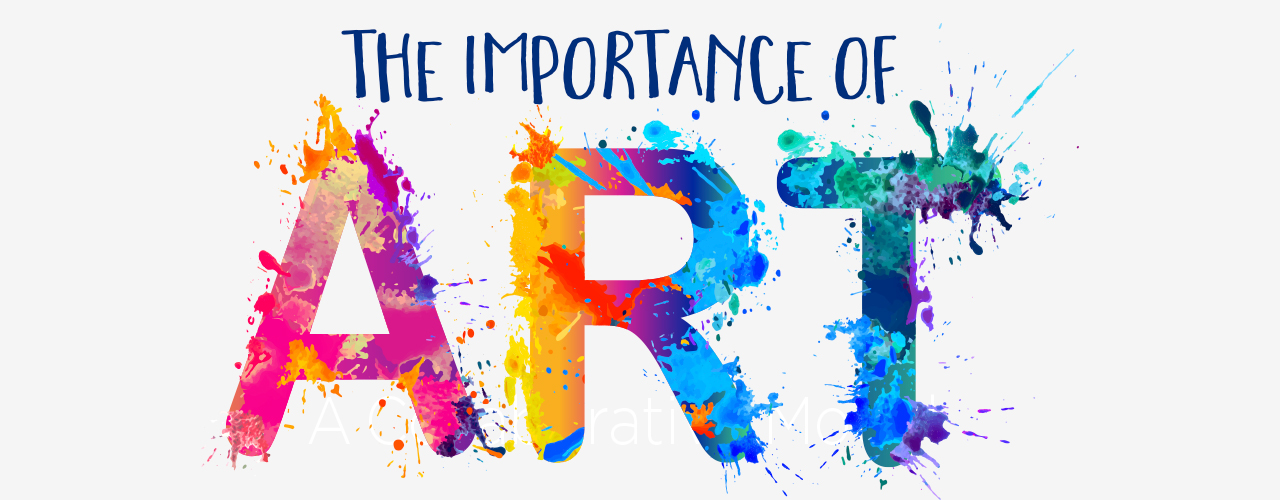The Importance of Art
It’s a sad truth most artists must reconcile at some point in their creative lives: the role of the arts is constantly being questioned. Some people question whether the arts are necessary or justified, most often when the subject has to do with funding arts curricula. For others, there is no debating the belief that the arts have never been more important to our society and should be fully integrated into our lives, our community and education in general.
First, art is the barometer that measures levels of cultural sophistication. Throughout human existence, we have learned about cultural accomplishments from the cultural artifacts left behind. Many of these artifacts have left behind permanent marks on the planet. Consider the construction of Stonehenge, the Greek Parthenon, the Roman Colosseum, the Hagia Sophia, the Blue Mosque, gothic cathedrals, St. Peter’s Basilica, Meso-American pyramids, the Taj Mahal and even, the Statue of Liberty. Each of these iconic structures also is a piece of art that communicates important messages about the time, place and context in which the structure was created.
In addition to providing commentary about the larger culture, art makes life more manageable, tolerable and enjoyable. One may not think about more utilitarian items and places as “art,” but they do contribute to one’s aesthetic experience. Think about the iPhone, the Fort Worth Water Gardens, Call of Duty: Black Ops, floor rugs, royal processions, Gucci’s Spring line, Versace furniture, Ducati motorcycles, Land Rovers, Gaudi’s Sagrada Familia, Calvin Klein, Calatrava bridges, sunglasses, military uniforms, Star Wars, Rolling Stone Magazine covers and the Transformers. Now, remove any element founded in creativity, art and design, and all that remains are piles of materials that require human imagination and visual thinking.
Art forces humans to look beyond that which is necessary to survive and leads people to create for the sake of expression and meaning.
Our own city, Fort Worth, is home to three world-renowned museums: The Amon Carter Museum of American Art, The Kimbell Art Museum and the Modern Art Museum. This city’s moniker of “Cowboys and Culture” is apt—a merging of Fort Worth’s rich western history as equally shaped by cowboys, expansive ranches, the Chisolm Trail AND important fine art institutions. It is the cultural arts that elevate our city onto the international stage.
Art can communicate information, shape our everyday lives, make a social statement and be enjoyed for aesthetic beauty. Tarrant County College reinforces Fort Worth’s rich culture. Each campus offers a variety of fine art experiences for students of all majors to attend and become inspired. These opportunities include theater performances, music concerts, dance performances and visual art gallery exhibitions. Trinity River Campus is even home to a large techno-centric art collection. These free resources represent an extension of the classroom and can be utilized and appreciated by the entire community.
In an informal conversation with Scott Robinson, dean of humanities at the Trinity River Campus, several Design I students were discussing the importance of art and why it is necessary in an academic environment. Through much discussion and some arguing, the group concluded that the arts are necessary to give meaning to things. The sciences provide the facts and information that give order to our world and are at the vanguard of innovation and human achievement. For example, science can teach us about the life cycle of organisms. It explains why organisms age, it provides the ability to prolong life through medicine and it gives an insight into the workings of death and decay.
On the other hand, art can give meaning to the concept of death. Egyptians mummified individuals and laid them to rest in magnificent tombs, while present-day humans place loved ones in the ground (or in mausoleums) and decorate that resting place with plaques, memorials and flowers. El Dia de los Muertos celebrates the passing of loved ones and remembers them through visitations, offerings and the belief that their souls remain near. These cultural practices, combined with our scientific understanding, allow us to process life and death more holistically.
Is it fair or even justified to separate art from the sciences? The only answer to this question is a resounding “NO.” The arts and sciences have a symbiotic relationship. Leonardo Da Vinci best captured the relationship of the two in his claim that they are separate but intertwining paths that lead one to the same end: knowledge.
Angel Fernandez
The focus on Science, Technology, Engineering and Math (STEM) is one of the current buzzworthy initiatives in academia. The acronym can easily be transformed into STEAM by the inclusion of art into the formula. Art should be included and the focus should change. The exclusion of the arts is a disservice to the world’s youth. A popular bumper sticker asserts that “Earth” without “art” is just “Eh,” a desolate and meaningless place. We can do better than that. We must. Art is the key.
Fine and Visual Arts Events
In keeping with its commitment to excellence in the arts, TCC offers a variety of opportunities to enjoy dance, drama, music and visual arts exhibits each semester. View a complete list of upcoming eventsListen.


![//parameter[@name='author']](/magazine/assets/images/authors/angel-fernandez.jpg)